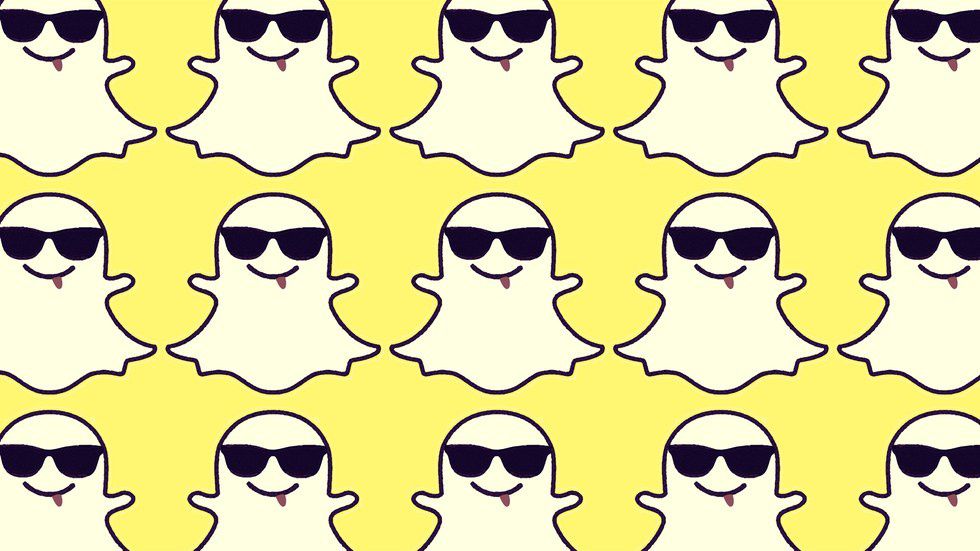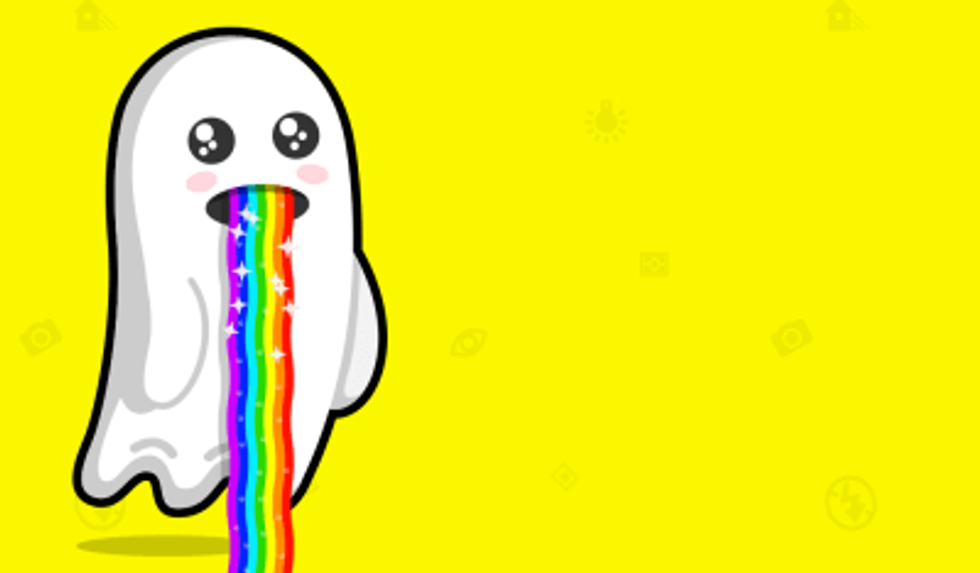Snapchat’s selfie lenses have become just as popular an addition as the company’s concept of instant and ephemeral photographic communication itself.
Snapchat is a mode of communication popular among today’s tweens, teens, and young adult populations in particular. The fact that one can snap a photo, add a tagline, and send it off to numbers of friends has created a culture of persons who communicate via imagery, expressing their personal emotions through the facials of a selfie, or joke about real life situation they are currently experiencing.
I remember the first time I heard about Snapchat. I was sitting at a circular table at a restaurant bar with girls I dance with at my community college. We were together for a night out.
This was my first “night out” with them, and I must preface all this by saying I am a semi-non-traditional student. That is, I am, on average, about seven to nine years older than the others I am typically surrounded by.
While seven years seems a little trivial, these years can create wide gaps. In this generation, in particular, these gaps are ever-widened. I was someone who had to have a college email to even sign up for Facebook (it used to be closed to the public). I did not hear about YouTube until I was eighteen and in my first journalism course at the university. Compared to my youth counterparts, I often realize they have been updating statuses since they were the age of twelve. This is a social phenomenon my brain has still yet to comprehend.
So, like I said, the first time I heard about Snapchat I was at this bar with girls I dance with. One of the girls took a picture at our table and said, smiling, “I am going to snap this!”
“Snap that?” I said aloud, immediately exposing not only my age, but also my general disinterest in millennial pop tech culture. Actually, this disinterest in conduct veils a maniacal fascination I have for the pop world and its effects on our culture.
People looked at me. “What does snap mean?” I asked further, no shame.
“Snapchat,” a girl said snappily, as if it should be obvious by then.
“What is a Snapchat?” I asked.
A flurry of “OMG’s” and “are you serious?” erupted from the mouths of the girls I see do plies on a much more regular basis than I ever see drink a beer. “You don’t know what Snapchat is!?”
“No,” I laughed, realizing I was beyond the time of some popular app.
“You should look it up,” a girl assured me, nodding.
Sure, I thought, I’ll do that when I get home. Or right now, with my smartphone.
I did it right then. The thing about studying anthropology is no matter how foreign something is or seems, the anthropologist always wants to make it familiar. When something that should be familiar is foreign, the intrigue grows exponentially. I had to know what was so awful about this thing amongst youth in my own culture.
The next time I heard about Snapchat was with a new friend. He looked at snaps from people he told me he barely knew, and I didn’t understand the point of spending ten seconds of your time every five minutes looking at pictures from people you don’t even care about. But, he also snapped his brother and others on a regular basis, often with funny things happening, or about things we were doing together. He convinced me to download the app.
I did, and soon, like everyone, I was snapping about anything trifling or ever so humorous that crossed my path. The most memorable: when someone had parallel parked a bicycle on the side street I usually parked on at my university. No bike lock, nothing, simply a bicycle propped up by its kickstand, taking up the full space of a parked car, resting under the pouring rain.
After mistaking it for a parking spot, I braked in the middle of the street, snapped a photo of the situation, and wrote “Who does that?” before sending it away to some friends.
I deleted the app for nearly a year but have since redownloaded it. I recently discovered the selfie lens, after a friend posted a picture of herself with a cat’s face on Facebook. Someone commented asking if it was a Snapchat filter, and I asked, “how do you do that?”
I learned how to use the filters, and for the next couple days reveled in discovering the new lenses each day. But I have one complaint.
Please, stop telling me to open my mouth.
When I first learned about Snapchat, I also discovered via the Net that it is theorized Snapchat’s initial aim was to send nude photos that would instantly disappear after ten seconds max. While this is controversial, the creators never stating this was the reason, many in the Snapchat culture today may agree with this use.
However, the widespread everyday use of Snapchat has become the norm instead, and people often use it just as much as they would texting. Some people will text with Snapchat alone, not only communicate via photograph. And others still will have a conversation with the short video feature Snapchat provides.
But given the theory of “naked-picture-that-will-eventually-delete-itself” photo exchange, I cannot help but think of the sexual innuendos that come with asking the selfie taker, filter lens user, to open her mouth.
Granted, when we open our mouths, rainbow puke comes out, or stars fall from the sky, or a dog’s tongue licks the viewer. But still, I don’t want to be asked to open my mouth.
Sigh. The complaints of a leisure culture who has the time to take so many vain and self-directed photographs…




















